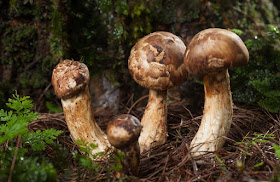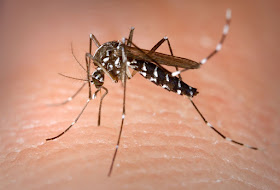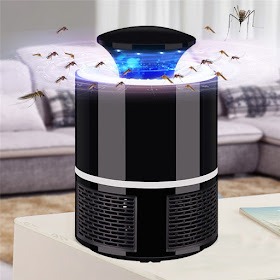Mushrooms are consumed in almost every part of the world. Previously they were used only as natural medicines and compresses but later on people started consuming them too. Mushrooms can be grown either naturally or in commercial indoor growing areas. There are various kinds of mushrooms available all around the world. Different kinds of mushrooms have different kinds of price rates. But the mushrooms which are considered to be true edible delicacies are basically too expensive. These kinds of mushrooms are difficult to harvest and cultivate and are very rarely cultivated. Given below are the top five costliest mushrooms available in the world:
Yartsa Gunbu: Cordyceps sinesis Yartsa Gunbu Yarsagumba - These mushrooms grow out from the bodies of ghost moth caterpillars when the parasitic fungus eats away the body of the caterpillar which ultimately leads to its death. These mushrooms are harvested in the Himalayas and the Tibetan plateau.They generally cost around $2,000 an ounce. These mushrooms are considered to be a symbol of status in those areas in which they are grown.
European white truffle: These mushrooms are considered to be the second most expensive mushrooms in the world. They cost around $3,600 per pound. They are too expensive because it is very much difficult to harvest them. These mushrooms are mostly found in France and Italy where they have a great demand in the markets. The scarcity of these mushrooms has led to the emergence of a black market where they are sold at much higher rates.
Matsutake: This mushroom is considered to be a true delicacy by the Japanese people. It has a spicy and fruity aroma. Its price ranges from $1,000 to $2,000 per pound. These mushrooms grow naturally on red pine trees as there are no new methods developed by human beings for cultivating them. Matsutake is also considered to be an endangered species of mushroom because it is found only in a few regions where there are red pine trees. There are many kinds of mushrooms that are used for certain types of delicacies or cuisines. An example of a mushroom that is highly popular in some countries is a truffle. Usually used either as an ingredient or as oil, truffles are loved by many due to their distinct taste and the aroma they give to the dishes. However, in Japan, probably the most loved mushroom of all is the matsutake. Even though it is considerably simple to harvest matsutake mushrooms, they are still quite rare due to their specific requirements for them to be able to grow. The appropriate forest and terrain wherein the mushrooms would be able to grow is also rare. Furthermore, there is competition between humans and wild animals, such as rabbits, squirrels, and deer, which feed on these mushrooms when it is time for harvest. In Japan, the local production of matsutake has decreased over the last 50 years because of the nematode Bursaphelenchus xylophilus, which kills pines. Hence, matsutake mushrooms are incredibly expensive.
At present, the annual harvest of these mushrooms in the Land of the Sun could not even reach a thousand tons. The supply of this mushroom in Japan is largely composed of imports from Korea, China, Northern Europe, and the North American Pacific Northwest. While it is generally expensive to purchase matsutake in Japan, the price depends on factors such as its availability, origin, and quality to name a few.
Morels: The dried forms of these mushrooms have a very high demand. This is because these mushrooms have a very light weight and it takes a lot of them to make even a pound. They generally cost around $254 per pound. On the other hand, the fresh morals range from $30 to $90 per pound. They are available in the United States between the months of March and May. They are found in sufficient quantity in the states of the Midwest. These mushrooms are very difficult to find because they are mostly surrounded by trees in the forest areas.
Chanterelles: These mushrooms basically grow in the coniferous. These Chanterelles come in various colors like golden, orange, yellow and white. These mushrooms have specific growing conditions which make them very much expensive. The prices of dried Chanterelles range from around $224 per pound. Chanterelles seem to be worth their weight in gold. They are golden looking, golden tasting, and golden priced. The cap is fleshy, with wavy, rounded cap margins tapering downward to meet the stem. The gills are not the usual thin straight panels hanging from the lower surface of the cap, as we see in the common store mushroom. Instead, the ridges are rounded, blunt, shallow, and widely spaced. At the edge of the cap they are forked and interconnected. The chanterelle's aroma is variously described as apricot- or peachlike. It is unmistakably different and identifiable.
Chanterelles will reappear in the same places year after year if carefully harvested so as not to disturb the ground in which the mycelium (the vegetative part of the mushroom) grows. There are yearly variations--some years more mushrooms, some less. They fruit from September to February on the West Coast and almost all summer in the east, sometimes coming up in several flushes. We think of them as promiscuous in their plant relationships, because we have found their mycelial threads intertwined with the roots of hardwood trees, conifers, shrubs, and bushes. They enjoy deep, old leaf litter. Chanterelles are seldom invaded by insects. And forest animals do not share our interest in them as food.
So, these are the top five most expensive mushrooms in the world. Although they come in expensive prices, they are considered to be one of the most happening delicacies in the world.
Interesting Books on Bonsai can be found here:
The Complete Book of Bonsai --> I've been into bonsai for 25 years and this is the basic Bible for beginner and intermediate bonsai enthusiasts. It has an excellent section on techniques, including pruning, wiring and whatnot, and it has a large species-specific tree guide. If you're into bonsai and want only one book, this is it.
Indoor Bonsai The Great Selection --> Creating beautiful, healthy bonsai is a wonderful skill that anyone can learn, with a little time, patience, and this all-inclusive manual. With color photos and drawings to illustrate the points, it introduces all the cultivation techniques; offers expert advice on location, soil types, watering, and pest control; and provides intricate instruction on training the bonsai--including pruning, wiring and stretching it.
The Secret Techniques of Bonsai --> In The Secret Techniques of Bonsai, the author of the groundbreaking Bonsai With American Trees teams up with his son to offer not only the basics for creating perfect bonsai, but also secret techniques they’ve developed over years of careful work and observation.
Bonsai Survival Manual --> Problem solving when your Bonsai get sick. Expand your gardening repertoire as you create a captivating and exquisite miniature world. In this introductory guide, Colin Lewis covers everything you need to know to design, grow, and successfully maintain attractive bonsai.
Bonsai and the art of Penjing --> Bonsai & Penjing, Ambassadors of Beauty and Peace describes how Chinese penjing and North American bonsai were later added to the Museum, making its collection the most comprehensive in the world. Stories of individual trees and forest plantings are featured, as are the roles played by the skilled and talented creators of these living art forms people such as John Naka, Saburo Kato, Yuji Yoshimura, Harry Hirao, and Dr. Yee-Sun Wu.
Bonsai with Japanese Maples --> With their delicate foliage, seasonal color changes, and intricate pattern of branching, Japanese maples are among the most popular and suitable plants for bonsai design. In this long-awaited book, internationally renowned expert Peter Adams discusses both the specific horticultural needs of Japanese maples as bonsai subjects and illustrates proven techniques for creating and maintaining beautiful specimens.
The Modern Bonsai Practice --> The most current, useful information on growing Bonsai. Fresh, practical, definitive, comprehensive reference guide to the finest art of horticulture: growing miniature trees. Common sense bonsai answers separating myth from fact with depth and detail. Appropriate for both bonsai hobbyists and experienced practitioners.
More Bonsai articles can be found here:
Please click here for more information on --> Chinese Penjing Bonsai
Please click here for more information on --> The Origins of Bonsai
Please click here for more information on --> The Art of Saikei Bonsai
Please click here for more information on --> Japanese Tanuki Bonsai
Please click here for more information on --> How to Water a Bonsai
Please click here for more information on --> Bonsai Healing Methods
Please click here for more information on --> Bonsai Books Review
Thank you for visiting my blog and feel free to subscribe or leave your message at the comment section below. Please always remember, good feedback's or bad remarks, it doesn't matter!











